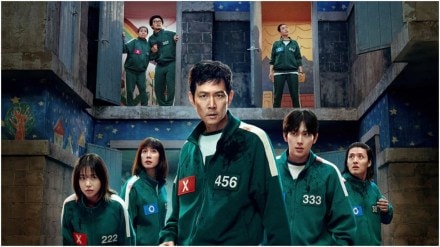Waking up in a green tracksuit on an isolated island and hearing “Mu-gung-hwa kko-chi pi-eoss-seub-ni-da” might feel like a nightmare. But for fans of Squid Game, it’s the start of a brutal survival test. Across the first two seasons, the hit Netflix series introduced a series of high-stakes games, each rooted in childhood but with fatal consequences. Here’s a breakdown of the deadliest challenges from all the seasons, based on survival odds.
Squid Game is loved globally, not just for its gripping narrative and unforgettable characters, but also for the psychological and physical toll each game inflicts. Every round has its own playbook, emotional manipulations, and an unforgiving edge that leaves no room for error. Whether relying on sheer luck or calculated risk, these games test everything from reasoning and teamwork to the cold instinct to survive.
Deadliest Squid Game challenges
Glass Bridge
What is the challenge: Featured as the fifth game in season 1, players are forced to traverse two parallel bridges made of glass panels. Some panes are tempered and safe, while others are ordinary glass that shatter on impact. The challenge demands 18 consecutive correct guesses under a 16-minute countdown.
Why it’s deadly: Unlike games that reward strength or tactics, Glass Bridge is purely a numbers game. With two options at each step, the probability of surviving unaided is practically nonexistent. Most who survive either delay long enough to learn from others’ missteps or manipulate fellow players into taking the lead—and the fall.
Mingle
What is the challenge: Introduced as the third challenge in season 2, Mingle places all participants on a rotating platform as the eerie melody “Round and Round” plays. Once the music halts, a number is announced, and players must assemble that exact count of people, enter a room, and lock it within 30 seconds. Any mismatch or delay results in instant disqualification.
Why it’s deadly: Mingle masquerades as a game of skill, but it’s entirely governed by chaos. Speed and logic may not matter if you’re the odd one out. The number called is unpredictable, and no advance planning can guarantee safety. Players like the Front Man (Lee Byung-hun) and contestant 333 (Yim Si-wan) survived only by eliminating rivals, highlighting the desperation it inspires.
Lights Out
What is the challenge: Following the third round in season 2, this phase unfolds in the dormitory, not as a traditional game, but as a carefully orchestrated massacre. Each player receives a meal tray and a fork, and when the lights shut off, violence erupts. The objective is to kill or avoid being killed.
Why it’s deadly: With no structured rules or formal competition, survival hinges on unpredictability. There are no allies and no safe corners. Escaping unharmed relies on sheer fortune or a swift descent into brutality.
Tug of War
What is the challenge: Known in Korean as Juldaligi, this team-based battle appeared as the third event in season 1. Two groups of ten are linked to a rope on either end of an elevated platform. The aim is to pull the opposing side off the ledge.
Why it’s deadly: Although strength seems to be the primary asset, Tug of War rewards tactical brilliance. Victory depends on coordination, rhythm, and leadership. As seen in season 1, Gi-hun’s group succeeds through strategy—not muscle. Panic, however, can quickly derail even the strongest lineup.
Six-Legged Pentathlon
What is the challenge: Played in season 2, this five-round contest ties groups of five players together at the ankles. Teams must complete a sequence of retro Korean games within five minutes:
Ddakji – Flip paper tiles using force
Flying Stone – Dislodge a stone by striking it with another
Gonggi – Pass a series of juggling stages using five pebbles
Spinning Top – Use thread to spin a top
Jegi (Jegichagi) – Kick a paper sack five times using one foot
Why it’s deadly: The Pentathlon places emphasis on timing, trust, and unity. It’s one of the rare trials where success is genuinely achievable through cooperation. Teams that stay in rhythm and communicate effectively have a good shot at completing all five challenges.
Red Light, Green Light
What is the challenge: Serving as the series opener in seasons 1 and 2, this traditional playground game is reinvented with a lethal twist. Players must cross a field while a giant doll named Young-hee watches. Movement is only allowed while it sings. If anyone is caught moving after the music stops, they’re shot instantly.
Why it’s deadly: Despite its high casualty rate, Red Light, Green Light is among the more winnable games. The rules are unambiguous, and success depends on stillness and mental control. Most fatalities result from panic, external interference, or lack of composure. With a clear head, it’s possible to make it through.
